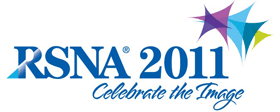
Abstract Archives of the RSNA, 2011
Mitsuhiro Tozaki MD, PhD, Presenter: Nothing to Disclose
To assess the diagnostic performance of automated breast ultrasonography (US) for non-mass lesions of the breast.
This study was approved by the institutional review board. Bilateral whole-breast US was performed using the ACUSON S2000 automated breast volume scanner (ABVS; Siemens Medical Solutions, Mountain View, CA, USA) in 812 consecutive women. The automated scanning included four sequential scans of the upper-outer, lower-outer, lower-inner and upper-inner regions. The 3D breast volume data were evaluated using the ABVS workstation, and the final assessment categories according to the Breast Imaging Reporting and Data System (BI-RADS) for non-mass lesions were prospectively recorded using the following standards: localized hypoechoic areas with one of three suspicious findings (segmental distribution, ductal change, or microcalcifications) were defined as category 4a (low suspicious), and localized hypoechoic areas with two or three suspicious findings were defined as category 4b (moderate suspicious) or 5, respectively.
Three hundred and fifty-four non-mass lesions (292 benign and 62 malignant lesions) were examined. The average lesion size determined using ABVS was 29 mm (range, 8 to 65 mm). Among the malignant lesions, the histological type was pure ductal carcinoma in situ in 49 cases (79%) and invasive ductal carcinoma with intraductal component in 13 cases (21%). The positive predictive values (PPVs) for the three suspicious findings (segmental distribution, ductal change, and microcalcifications) were 82% (27/33), 71% (42/59), and 46% (26/57), respectively. The PPVs for the category 4 and 5 assessments were as follows: category 4a, 34% (24/70); category 4b, 86% (25/29); and category 5, 100% (7/7). Sensitivity with a cut-off between categories 3 and 4/5 was 90%, specificity was 83%, the PPV was 53%, the negative predictive value (NPV) was 98%, and accuracy was 84%.
Segmental distribution, ductal change, and microcalcifications are predictive findings for non-mass type malignancy, and automated breast US using ABVS might be a feasible means of evaluating the presence or absence of these suspicious findings.
Automated breast US could allow the scanning of the whole breast with a constant time and might be feasible for the differential diagnosis of non-mass breast lesions.
Tozaki, M,
Diagnostic Performance of an Automated Breast Volume Scanner for Nonmass Lesions. Radiological Society of North America 2011 Scientific Assembly and Annual Meeting, November 26 - December 2, 2011 ,Chicago IL.
http://archive.rsna.org/2011/11010202.html

